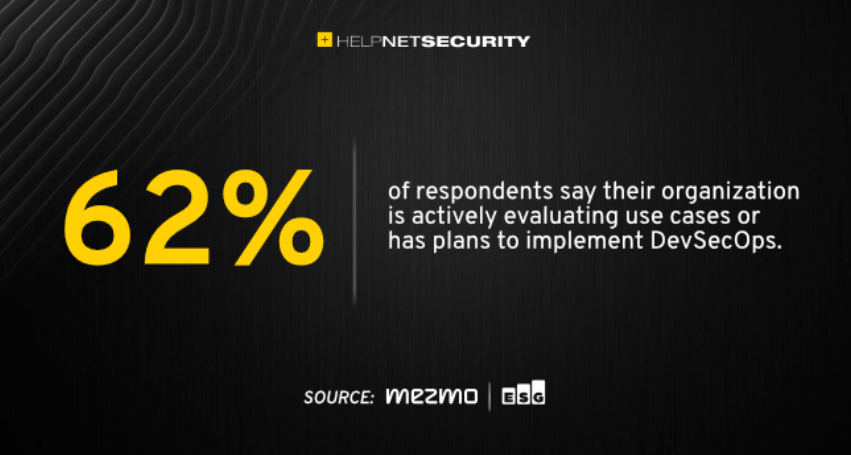What is DevSecOps?
Explore how DevSecOps unifies development, security, and operations for faster, safer software delivery.
Table of Contents
Traditionally, software development existed in two distinct worlds: development and security. Development teams focused on building features and delivering applications quickly, while security teams meticulously hardened software and tested for vulnerabilities to prevent breaches. This siloed approach often led to friction and delays. Developers felt stifled by security checks, and security teams struggled to keep pace with rapid development cycles.
Enter DevSecOps. DevSecOps stands for development, security, and operations, and it signifies the fundamental unity of these three teams. It’s not just a new methodology, but a cultural shift that brings development, security, and operations together throughout the entire software development lifecycle (SDLC). DevSecOps integrates security considerations from the very beginning, fostering collaboration between these previously separate teams.
What are the DevSecOps Principles?
Here are the core principles that define DevSecOps:
- Security as a Shared Responsibility : DevSecOps moves away from the traditional model where security is an afterthought. Instead, everyone involved in the SDLC – developers, security professionals, and operations teams – takes ownership of building secure software.
- Automation: Security testing is no longer a manual process conducted at specific stages. DevSecOps integrates security tools into the CI/CD pipeline. This allows for continuous monitoring and identification of vulnerabilities throughout the development process.
- Continuous Feedback: Security testing happens throughout the development process, not just at the end. This provides developers with real-time feedback on potential security issues, enabling them to fix problems early in the development cycle.
- Security as Code: This involves treating security configurations and policies as code. It allows them to be version-controlled, tested, and deployed alongside the application code.
- Continuous Improvement: DevSecOps is an iterative process. Teams should constantly be looking for ways to improve their development processes and security practices.
By following these principles, DevSecOps fosters a more streamlined and secure development process.
DevOps vs. DevSecOps
DevOps, which emerged as a response to the siloed development and operations teams of the past, is all about collaboration and automation. It streamlines the software development process by breaking down communication barriers and automating tasks like building, testing, and deploying applications. This allows for faster delivery cycles and a more efficient development workflow.
However, DevOps primarily focuses on speed and efficiency, with security often treated as a separate concern. This can lead to vulnerabilities being introduced late in the development cycle, requiring costly rework and delayed release cycles.
DevSecOps builds upon the foundation of DevOps by adding security as a core principle. It integrates security testing throughout the entire SDLC, ensuring that security considerations are woven into the fabric of the software from the very beginning. This collaborative approach between development, security, and operations teams leads to a more secure and efficient development process.
Why is DevSecOps Important?
The rapid adoption of DevSecOps can be attributed to several converging factors. Firstly, the cyber threat landscape is constantly evolving, with cyberattacks becoming more sophisticated and frequent. Traditional security testing methods, often conducted late in development, are no longer sufficient. DevSecOps offers a proactive approach by integrating security considerations from the very beginning of the software development lifecycle and ensuring that security is closely aligned with developer efforts.
Secondly, data breaches can be devastating for businesses, leading to financial losses, reputational damage, and regulatory fines. DevSecOps helps organizations mitigate these risks by building security into the software foundation from the ground up.
Finally, in today’s fast-paced digital world, businesses need to deliver software applications faster than ever before. DevSecOps streamlines the development process by automating security and integrating it seamlessly into the CI/CD pipeline.
Benefits of DevSecOps
DevSecOps is a strategic approach that delivers tangible benefits for organizations. Here’s how DevSecOps can empower your software development process:
- Faster Delivery: 60% of engineers release code twice as quickly with the DevSecOps principle. By integrating security testing throughout the development lifecycle, DevSecOps catches vulnerabilities early. This eliminates the need for costly rework later in the development cycle, leading to faster delivery of secure software.
- Improved Security: Traditional security testing often happens after the code is written. DevSecOps embeds security considerations from the very beginning. This proactive approach leads to the development of more secure applications with fewer vulnerabilities at the end.
- Enhanced Collaboration: DevSecOps breaks down silos between development, security, and operations teams. This fosters better communication and collaboration, leading to a more cohesive development process.
- Reduced Risk: By proactively identifying and fixing vulnerabilities early, DevSecOps helps organizations significantly reduce the risk of security breaches. This translates to fewer security incidents, protecting your data and reputation.
- Increased Efficiency: Automating security testing throughout the CI/CD pipeline saves development teams valuable time and resources. This allows them to focus on innovation, feature development, and other productive tasks.
- Cost Savings: While implementing DevSecOps might require some initial investment, the long-term benefits outweigh the costs. Early detection and prevention of security issues save organizations from the financial burden of data breaches and rework.
DevSecOps Best Practices
Implementing DevSecOps successfully requires more than just understanding the principles. Here are some key best practices to consider:
- Shift Left Security: This practice means embedding security considerations early in the development process, as opposed to waiting until later stages.
- Embrace Automation: Leverage security tools and platforms that can be seamlessly integrated into your CI/CD pipeline. Automate tasks like code scanning, vulnerability scanning, governance, and security configuration checks. This allows for continuous monitoring and identification of vulnerabilities throughout the development process without bogging down the security team with mundane repetitive tasks.
- Invest in DevSecOps Tools and Platforms: There are various DevSecOps tools available that cater to different aspects of security. Utilize tools for static code analysis, container security scanning, infrastructure as code (IaC) security scanning, and application security posture management.
- Foster Collaboration: Break down silos between development, security, and operations teams. Encourage open communication and collaboration throughout the development lifecycle.
- Provide Training and Education: Equip your teams with the knowledge and skills required for DevSecOps. Train developers on secure coding practices, security professionals on DevSecOps tools, and operations teams on secure infrastructure management.
- Define Governance and Guardrails: With the automation of security testing, establish clear governance policies to ensure developers follow security best practices while maintaining development agility. Define guardrails, which are automated checks that enforce security policies within the CI/CD pipeline.
- Measure and Monitor: Continuously monitor the effectiveness of your DevSecOps practices. Track key metrics such as the number of vulnerabilities identified, time to remediate vulnerabilities, and overall security posture and use the DevSecOps Maturity Model.
By following these best practices, organizations can establish a robust DevSecOps environment that fosters collaboration, streamlines development, and ultimately delivers secure software at high velocity.
Challenges in Implementing DevSecOps
While DevSecOps offers numerous benefits, implementing it successfully requires overcoming some key challenges:
- Security Data Overload: The security scanning tools needed to cover the SDLC generate a vast amount of data. Security teams can be overwhelmed by this firehose of information, making it difficult to identify and prioritize the most critical vulnerabilities.
- Balancing Security and Speed: Integrating security throughout the development process can sometimes slow down development. Finding the right balance between security and speed is crucial.
- Cultural Shift: DevSecOps requires a significant cultural shift within an organization. Breaking down silos and fostering collaboration between development, security, and operations teams can be challenging at times.
- Skills and Expertise: Successfully implementing DevSecOps requires teams to have a good understanding of security best practices, DevSecOps tools, and automation techniques.

How Can Governance and Guardrails Help with DevSecOps Challenges?
Implementing DevSecOps successfully requires navigating certain hurdles. Security teams can be overwhelmed by the sheer volume of data generated by automated security testing tools. This makes it difficult to identify and prioritize the most critical vulnerabilities. Additionally, striking the right balance between security and development speed can be challenging. A cultural shift within the organization is also necessary to break down silos and foster collaboration between development, security, and operations teams.
However, strong governance and well-defined guardrails can help mitigate these challenges. Governance policies can establish clear criteria for prioritizing vulnerabilities based on severity, potential impact, and business context, allowing security teams to focus on the most critical issues. Furthermore, governance can define standard processes for security reviews, ensuring consistency and efficiency.
Guardrails, which are automated checks within the CI/CD pipeline, enforce security best practices. This empowers developers to write more secure code without slowing them down. For example, guardrails can prevent code with known vulnerabilities from being merged into the main codebase.
By finding the right ASPM platform to create governance and guardrails in the CI/CD pipeline to pass/fail builds, organizations can create a win-win situation. Security teams can navigate the sea of data more effectively, while developers are empowered to develop new features without compromising security. By automating and orchestrating key DevSecOps workflows, an ASPM Platform can make it much easier to see success with DevSecOps initiatives.
DevSecOps Maturity Model
The DevSecOps Maturity Model (DSOMM) serves as a roadmap for organizations to assess and improve how well they integrate security practices throughout SDLC within a DevOps environment. It essentially helps gauge an organization’s current DevSecOps maturity level, which translates to how effectively security is woven into the development process.
This model offers several advantages. It allows organizations to pinpoint areas where their DevSecOps practices excel and where they fall short. DSOMM also helps prioritize security investments by focusing resources on the most impactful practices based on the current maturity level. Finally, the model facilitates measurement of progress over time as DevSecOps practices are implemented and maturity levels increase.
The key aspects of the DevSecOps Maturity Model involve assessing the current maturity level, defining the target maturity level, and outlining the steps needed to bridge the gap between the two.
One widely used model is the OWASP DevSecOps Maturity Model. It outlines four maturity levels, each with increasing levels of security integration within the DevOps pipeline.
DevSecOps Automation
DevSecOps thrives on automation. It’s the key that unlocks the potential for integrating security seamlessly throughout the software development lifecycle without sacrificing speed. Here’s how automation fuels the DevSecOps engine:
- Continuous Integration and Delivery (CI/CD) Pipeline Integration: Security tools and platforms can be integrated into the CI/CD pipeline. This allows for automated security checks to be performed at various stages of development, such as code commits, builds, and deployments.
- Automation: By integrating various security tools and automated workflows, CI/CD pipelines can streamline tasks for security, development, and operations teams. This not only reduces workload but also improves collaboration and agility. The tools like ASPM can easily connect with ticketing systems, asset management tools, messaging platforms, and code repositories. This allows for automating manual tasks within the CI/CD pipeline, leading to better insights and a more efficient workflow.
- Real-time Feedback: By automating the security process, developers receive immediate feedback on potential vulnerabilities. This allows them to fix problems early in the development cycle, reducing rework and delays.
- Improved Efficiency: Automating security frees up security teams’ time, allowing them to focus on more strategic initiatives.
- Reduced Human Error: Automation minimizes the risk of human error that can occur during manual security testing.
However, automation in DevSecOps isn’t a silver bullet. It’s crucial to carefully select the right tools and configure them effectively to avoid overwhelming developers with false positives or slowing down the development process.
AI in DevSecOps: The Future of Intelligent Security
DevSecOps is continuously evolving, and Artificial Intelligence (AI) is emerging as a powerful force in the future of secure software development. Here’s how AI is transforming DevSecOps:
- Advanced Threat Detection: Traditional security tools struggle to keep pace with the ever-evolving threat landscape. AI-powered security tools can analyze vast amounts of data from various sources, including security logs, network traffic, and vulnerability databases. This allows for real-time identification of emerging threats and suspicious patterns that might escape traditional methods.
- AI-powered Correlation: Security teams are bombarded with alerts from various security tools. AI can play a crucial role in correlating findings from these disparate sources. By analyzing the relationships between different alerts, AI can identify potential security incidents with greater accuracy and reduce the time spent investigating false positives and duplicate alerts.
- Improved Security Incident Response: In the event of a security breach, AI can analyze incident data to identify the root cause and recommend appropriate response actions. This can significantly reduce the time to remediate a security incident and minimize potential damage.
Integrating AI into DevSecOps requires careful planning, particularly regarding explainability and data quality. Security teams need to understand how AI reaches its conclusions to ensure trust and allow for human intervention when necessary.
Additionally, the data used to train AI models needs to be high quality and relevant to avoid biases that could lead to inaccurate security assessments. By carefully considering these factors and leveraging AI alongside DevSecOps principles, organizations can achieve a new level of security and efficiency.
AI can empower security teams to identify and respond to threats faster, while DevSecOps automation streamlines the development process. This combined approach paves the way for a future where secure software development happens at an unprecedented pace.
DevSecOps in Action with ArmorCode
While DevSecOps offers a strategic framework for secure software development, implementing it effectively requires the right tools. ArmorCode stands out as a comprehensive DevSecOps platform that empowers organizations to create governance and guardrails, boost developer’s productivity, and automate workflows, thus achieving their DevSecOps goals.
ArmorCode brings together several key functionalities into one ASPM Platform:
- Application Security Posture: It provides a single pane of glass view for all software assets, enabling security teams to identify vulnerabilities across the entire development landscape.
- Risk-Based Vulnerability Management: ArmorCode consolidates vulnerability findings from various security tools, eliminating the need to manage multiple dashboards and streamlining the prioritization process for security teams.
- DevSecOps Orchestration and Correlation: The platform automates workflows and uses AI to correlate findings across different scanning tools. This not only reduces manual effort but also helps identify complex security issues that might be missed through isolated testing.
DevSecOps with ArmorCode empowers organizations to achieve the ultimate goal: secure software development at high velocity. It fosters a win-win situation for both developers and security teams, ultimately benefiting the entire business.


